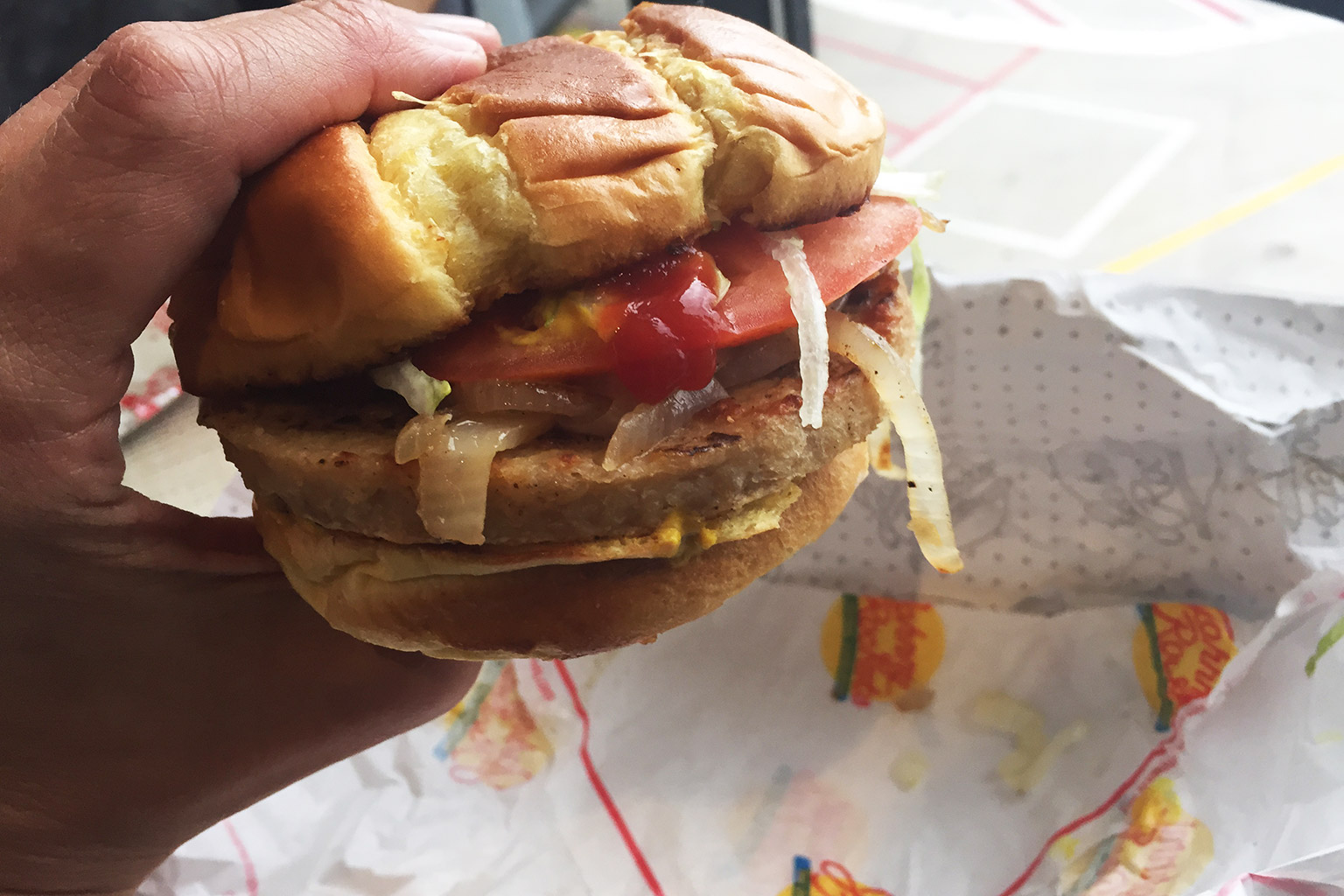Years back, when we lived in Brooklyn still, we attended an event held by NYC’s Greenmarket commemorating New York’s annual Pickle Day. And yes, that is a real thing. The event included a whole slew of vendors selling and discussing pickles and fermented fare that went well beyond your average cucumber pickle. At it, we were lucky enough to meet Lauryn Chun, founder of Mother-in-Law’s Kimchi, and hear her speak about the history of kimchi and pickling in Korea and how it tied in to cross-cultural fermentation worldwide. Her excellent book—The Kimchi Cookbook—had yet to be published then, but as soon as it was, we made sure it had a home in our house.
The primary go-to recipe for us and one we make most regularly is her write-up of traditional stuffed cabbage kimchi, or poggi kimchi—a whole napa cabbage kimchi that’s slowly fermented in a crock and lasts for months. But we recently made her for daikon radish cube kimchi (kkakdugi), inspired by the cookbook’s accompanying shot of the kimchi being used in a scrumptious-looking sandwich (beautifully shot by Sara Remington). As Ms. Chun writes, the bite-size cubes of the kimchi showcase the spicy, thick sauce that marries well with the radish’s crunchy, juicy, refreshing texture. After napa cabbage kimchi, kkakdugi is one of Korea’s most beloved and commonly consumed kimchi, often accompanying the Korean soup, seollungtang.
We reached out to Lauryn to ask if she’d be alright with sharing the vegan version of her recipe with our shot of the veganized sandwich—made with our favorite mock duck—and she kindly granted us permission. So here it is.
Prep: 30 minutes
Brine: 30 minutes
Fermentation: 3 to 4 days
Makes 8 cups (10 to 12 servings)
Brine
4 pounds daikon radishes (about 2 to 3 large)
2 tablespoons kosher salt
Seasoning Paste
1/2 cup sweet rice-flour porridge (see below)
2 tablespoons pureed salted apples (see below)
1 tablespoon minced garlic
2 teaspoons peeled, finely grated fresh ginger
1 tablespoon sugar
2/3 cup Korean chili pepper flakes
1/4 cup vegetable stock (optional)
4 green onions, green parts only, cut into 1-inch pieces (about 1/2 cup)
1/3 cup water
So the only modification to this recipe we’re making is subbing in vegetable stock for beef stock—Ms. Chun actually has a recipe for a mushroom stock in her book that’s perfect for this, but you can use a homemade or store-bought stock too—and then we’re subbing out salted shrimp. In it’s place, we’re using a slated apple puree. This is something she recommends early on in the book to achieve the desired umami or funk of kimchi but without shrimp or fish. She recommends a ratio of 1 teaspoon salt per 1/2 cup of puree. You can also use pears or onions in the place of apples.
Then the sweet rice-flour porridge—a staple of kimchi paste ingredients that “acts as a binding agent and makes the seasoning more viscous”—is another recipe from The Kimchi Cookbook and can be made in a larger batch ahead of time. Prepare an ice bath and, in a small saucepan, bring 3/4 cup of water to a boil. Meanwhile, dissolve 2 tablespoons of sweet rice flour in 1/4 cup of cold water. Whisk the flour mixture into the boiling water and stir for 15 to 30 seconds, until the mixture thickens and resembles white glue. Remove from the heat and set in the ice bath to cool. When cool, remove from the ice bath. Allow to cone to room temperature, stirring for 5 to 10 minutes. If you’re making it ahead of time, you can store refrigerated in a container up to 3 days.
Finally, if you’re in need of Korean chili flakes—gochugaru—and don’t have a Korean market nearby or just aren’t comfortable shopping in stores, we highly recommend ordering them from Los Angeles’ Mama Kim’s Kimchi via Etsy.
Now, on to the kkakdugi:
Using a paring knife, trim the radishes and scrape away the outer grimy layer. Do not peel the entire outer layer of the radish; the skin is needed to maintain firmness while pickling. Cut the radishes into 3/4- to 1-inch cubes—it’s okay if some pieces aren’t exact.
In a large colander, sprinkle the radish cubes with the salt and let them brine for 30 minutes. Drain the radishes and set them in the colander over a bowl to drain some more.
Meanwhile, make the seasoning paste. In a mini food processor fitted with a metal blade, pulse together the porridge, salted apple puree, garlic, ginger, and sugar until a paste forms. Transfer the mixture to a medium bowl and stir in the chili pepper flakes and stock. Set aside for about 15 minutes to let the flavors combine.
In a large bowl, combine the drained radishes with the seasoning paste and green onions until the seasoning paste is evenly distributed throughout. Pack tightly into two quart-size containers. Add about 1/3 cup water to the mixing bowl and swirl the water around to collect the remaining seasoning paste. Add a few tablespoons of the water to each container. Cover tightly and let sit at room temperature for 3 to 4 days. Refrigerate and consume within 6 months.



